
If you’re like me, and are a fan of the French saxophone maker Pierret, then there are a couple of interesting horns on eBay at the moment, that may be of interest to you. The horn types and models are very different, and span decades of the company’s nearly 70 year existence.
The first sax that caught my eye is an alto “Vibrator”, which is being sold on the German eBay site. The “Vibrator” was one of Pierret’s early models, and is circa 1930. (One would have to do a search of the European and American patents to confirm the years that the respective patents were issued. This is something I’ve been meaning to do, but have so far not done.)
The seller of this “Vibrator” describes the horn like this:
Altsaxophon Pierret a Paris
Manufacture Spezciale de Saxophones
3590
Peyruqueou
De L’opera Paris
” Vibrator”
215
215 Patent Pending USA
BREVETE SGDG 215
Mundstück Déposé
Komplett überholungsbedürftig.
Äußerlich schöner Zustand.
Internationale Versandkosten je nach Land.
The first few lines of the eBay are mostly the text stamped on the bell of the horn. Therefore, according to both Google and Helen Translate 😉 , here’s the translated eBay ad text:
Alto saxophone Pierret Paris
Manufacturer of Saxophones
3590
Peyruqueou
L’opera Paris
“Vibrator”
215
215 Patent Pending USA
PATENTED SGDG 215
Mouthpiece Filed [presumably for patent, and he likely means the neck]
Needs an overhaul
Outwardly in good condition
International shipping costs vary by country
These “Vibrator” saxophones by Pierret didn’t have a neck fastening screw. The tenon simply fit tightly into the socket and provided a good seal. IIRC, the idea was that this allowed for less dampening, and more vibration—hence the model name “Vibrator”.
Source: viertelpause on eBay.de
I’m curious what the number under the model name “Vibrator” is all about. This horn is stamped 215 below the model name, while another “Vibrator” alto I saw earlier this year was stamped 512 in the same place. And just in case you’re thinking like I was—that the engraver got the order wrong on the bell—the octave key is stamped with 512 as well.
If you are interested in this vintage French “Vibrator” by Pierret, you have until August 5 to get your bids in. At the time of writing there were 9 bids on the sax already, with the high bid being €146.00.
The second Pierret that caught my eye was a Super Artiste baritone. Like the “Vibrator” from Germany, this Super Artiste is in need of an overhaul before it can sing like it was meant to.
Source: encoremusicrx on eBay.com
The Super Artiste was Pierret’s last model, and was produced for a many years. The Super Artiste is generally the most sought-after of the Pierret saxophones. This particular bari is one of the earliest ones, since it is #1522.
This is how the seller describes this interesting old sax:
You are bidding on a used L. Pierret Super “Artiste” Model Bari Saxophone for parts or overhaul. The L. Pierret Company was a Saxophone Shop located outside Paris that started in 1906 and stopped producing Saxes in 1972. They made saxes for Olds (Parisian), Beuscher, Runyon, and others. The serial number is #1522 and from what I have been able to determine it was made sometime around 1953. The only part that I can tell is missing is the key guard for the Low D# key. It appears to have had some soldering work, but it the rest of the horn is intact with not too many dents. This horn could be overhauled and made to play again, I just don’t have the time for this kind of project at this time. Or you could use it for parts on another Pierret Super “Artiste” Bari Sax. It does not come with a case but it will be packed well to ship.
The photos show a horn that, while far from being a beauty, is not as beat-up as many baris we see for sale:
Source: encoremusicrx on eBay.com
What’s interesting about this low Bb Super Artiste baritone by Pierret is that the seller is starting the no reserve auction at only $99.99. At the time of writing there were 3 bids on this Pierret classic, with the high bid being $104.50. The auction runs until August 5.

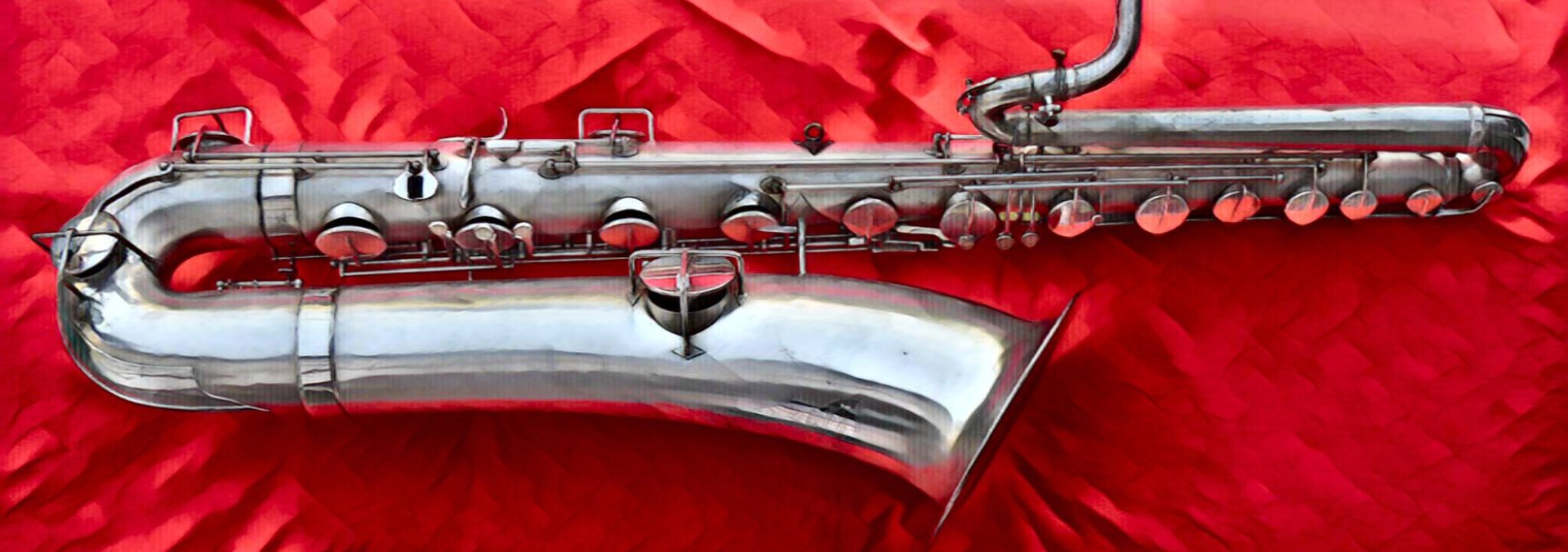

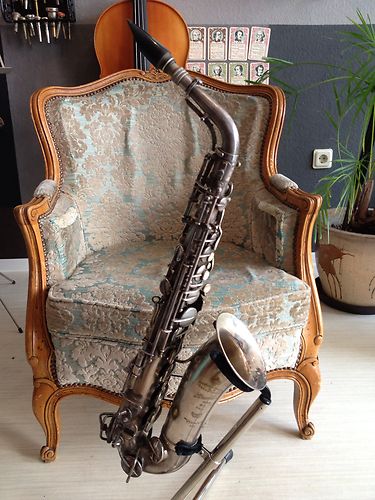
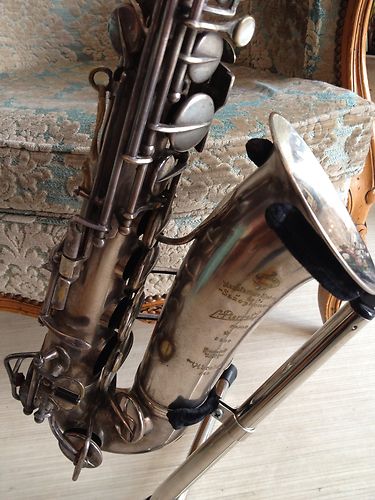
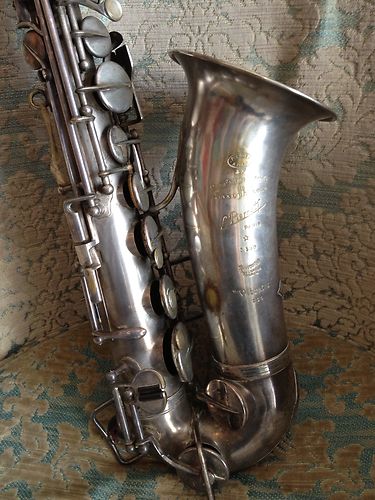
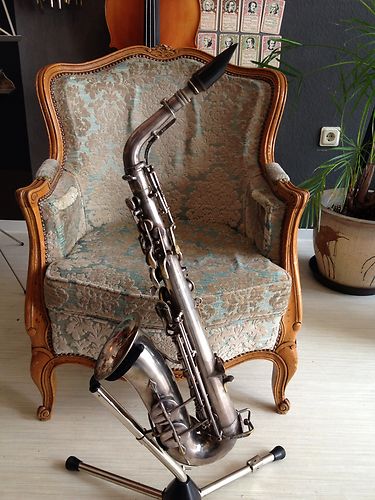
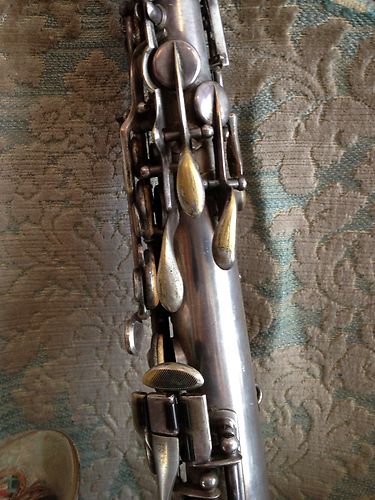

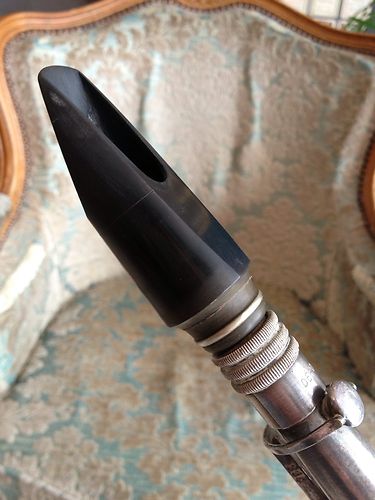

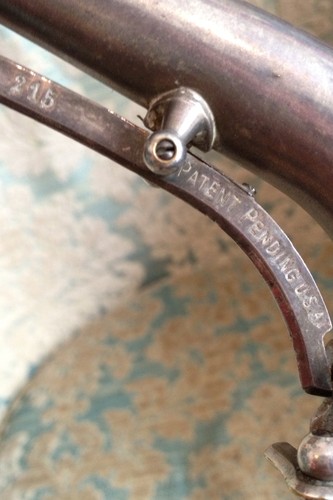
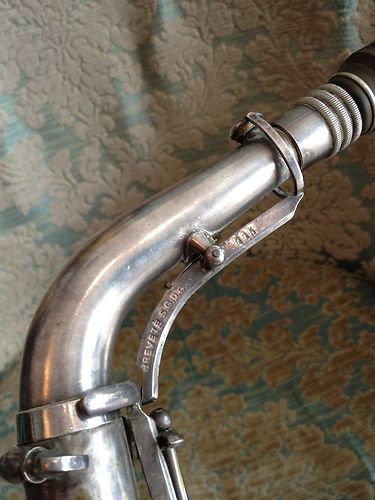



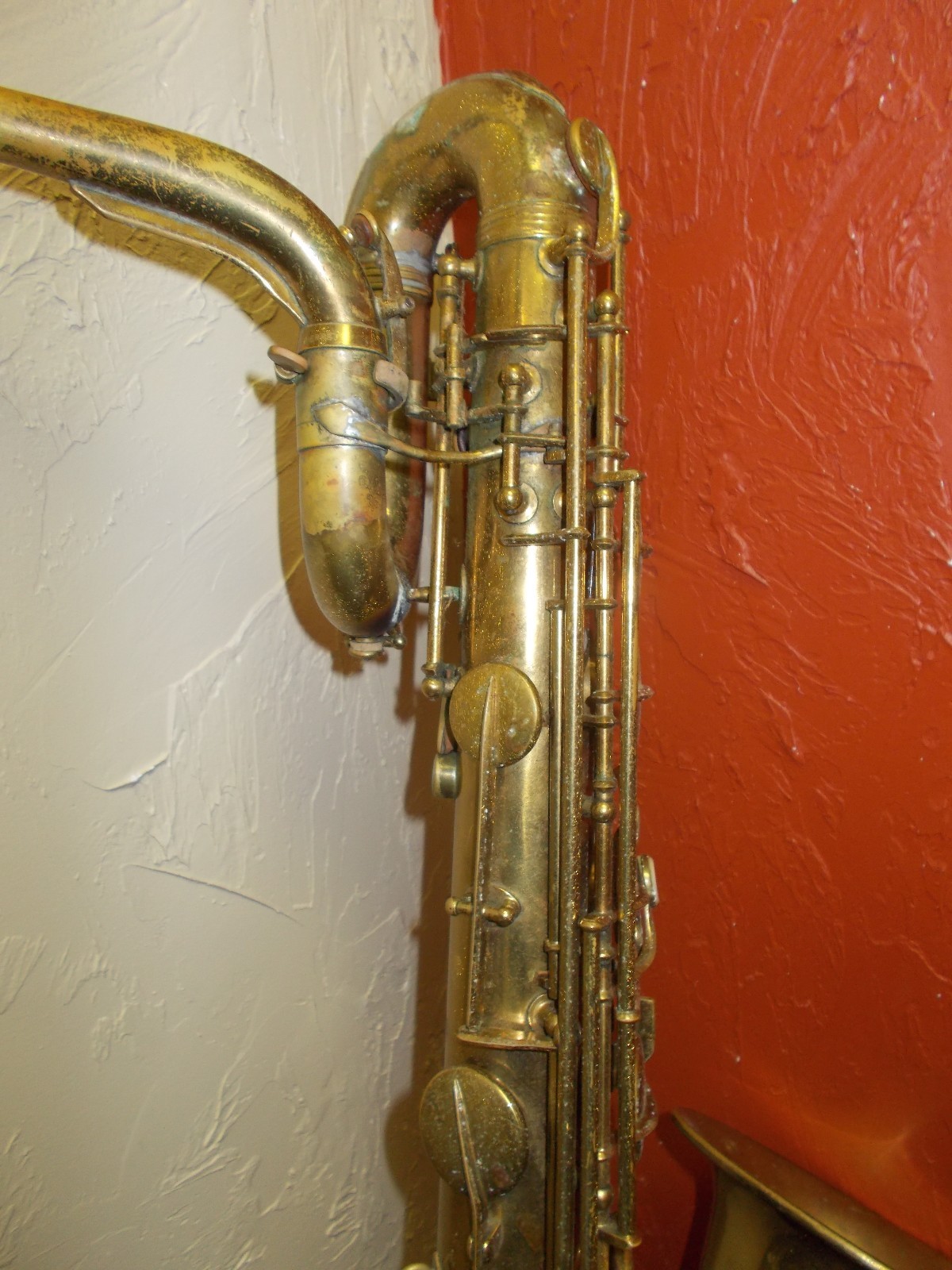
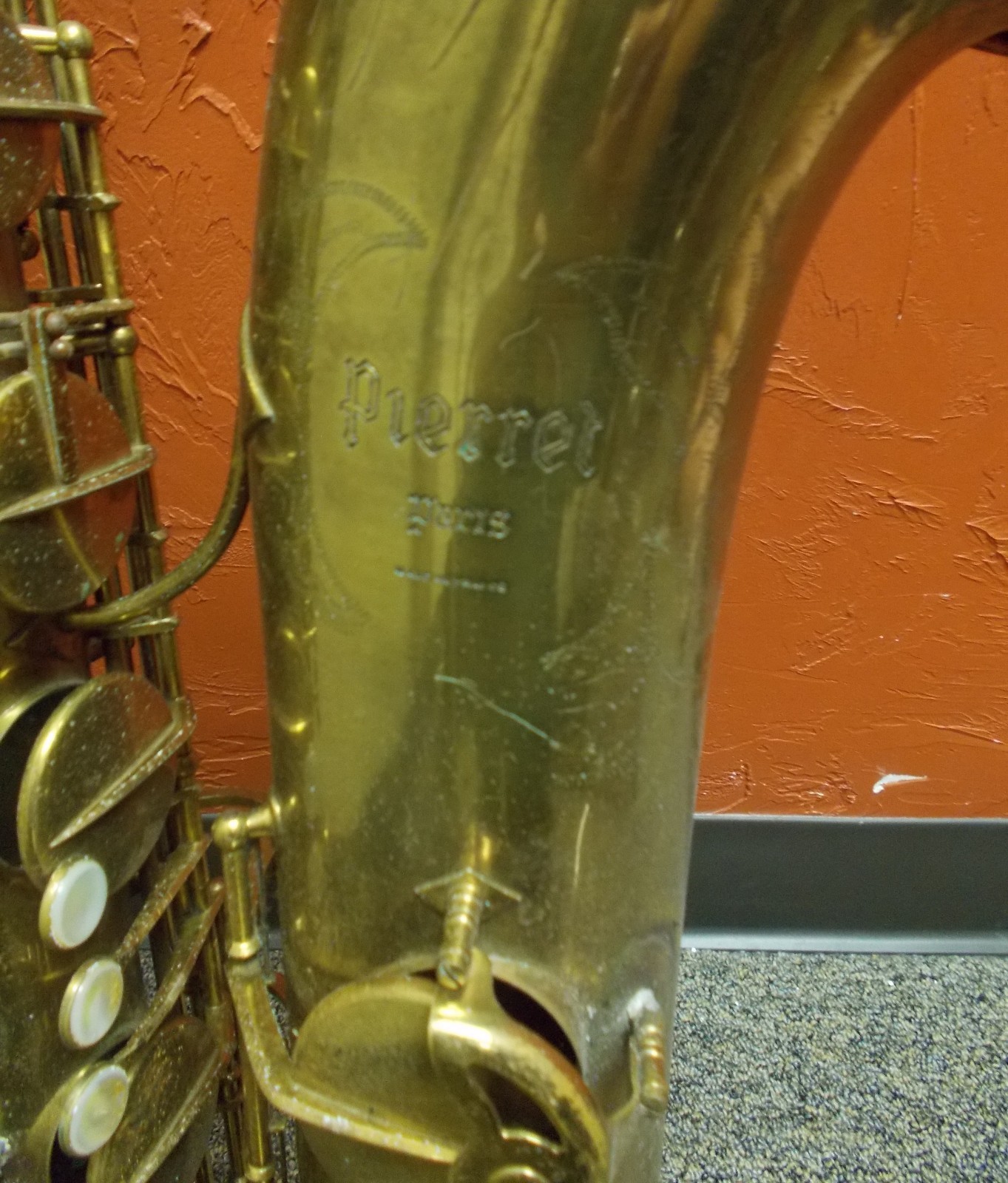


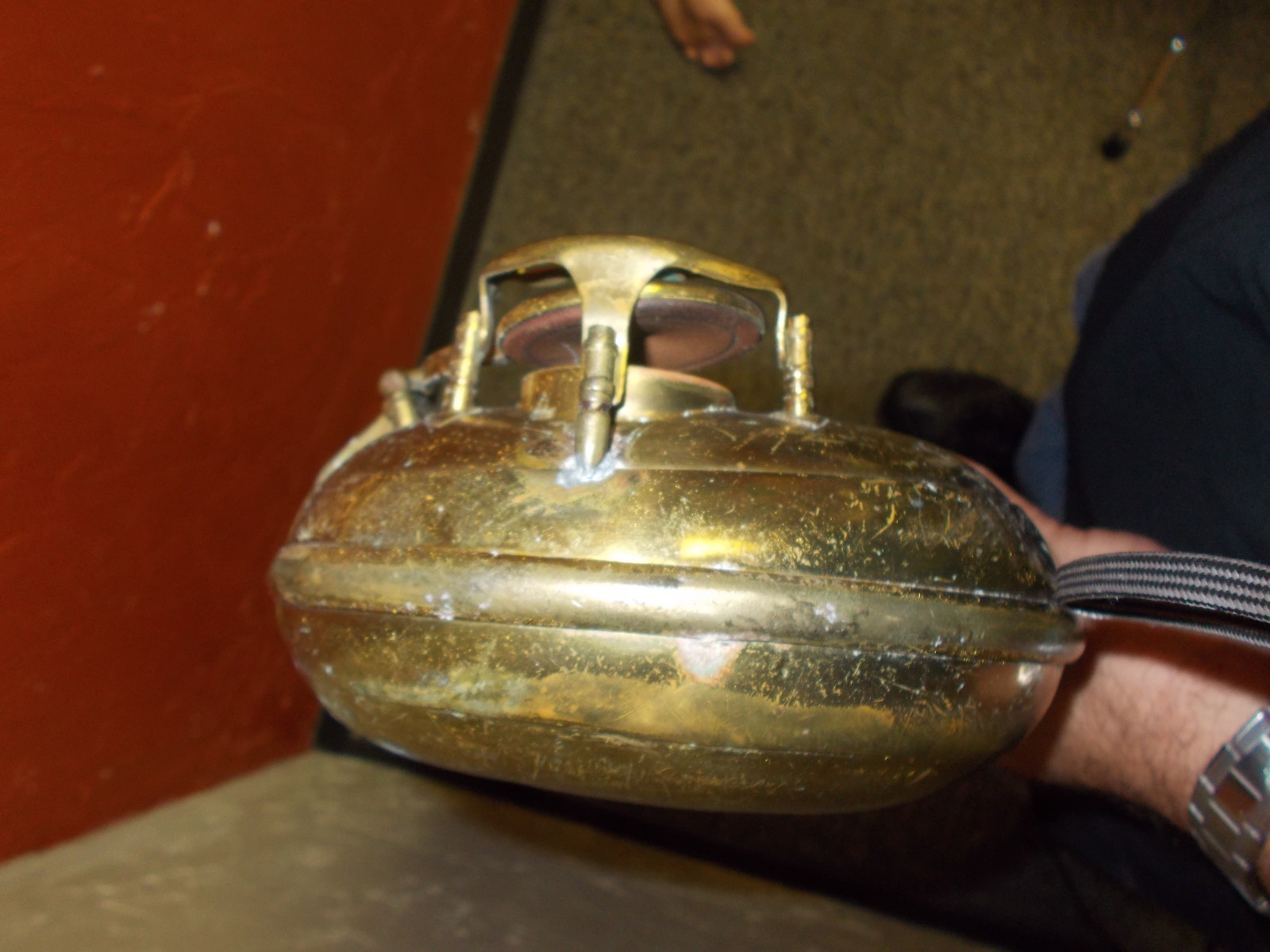
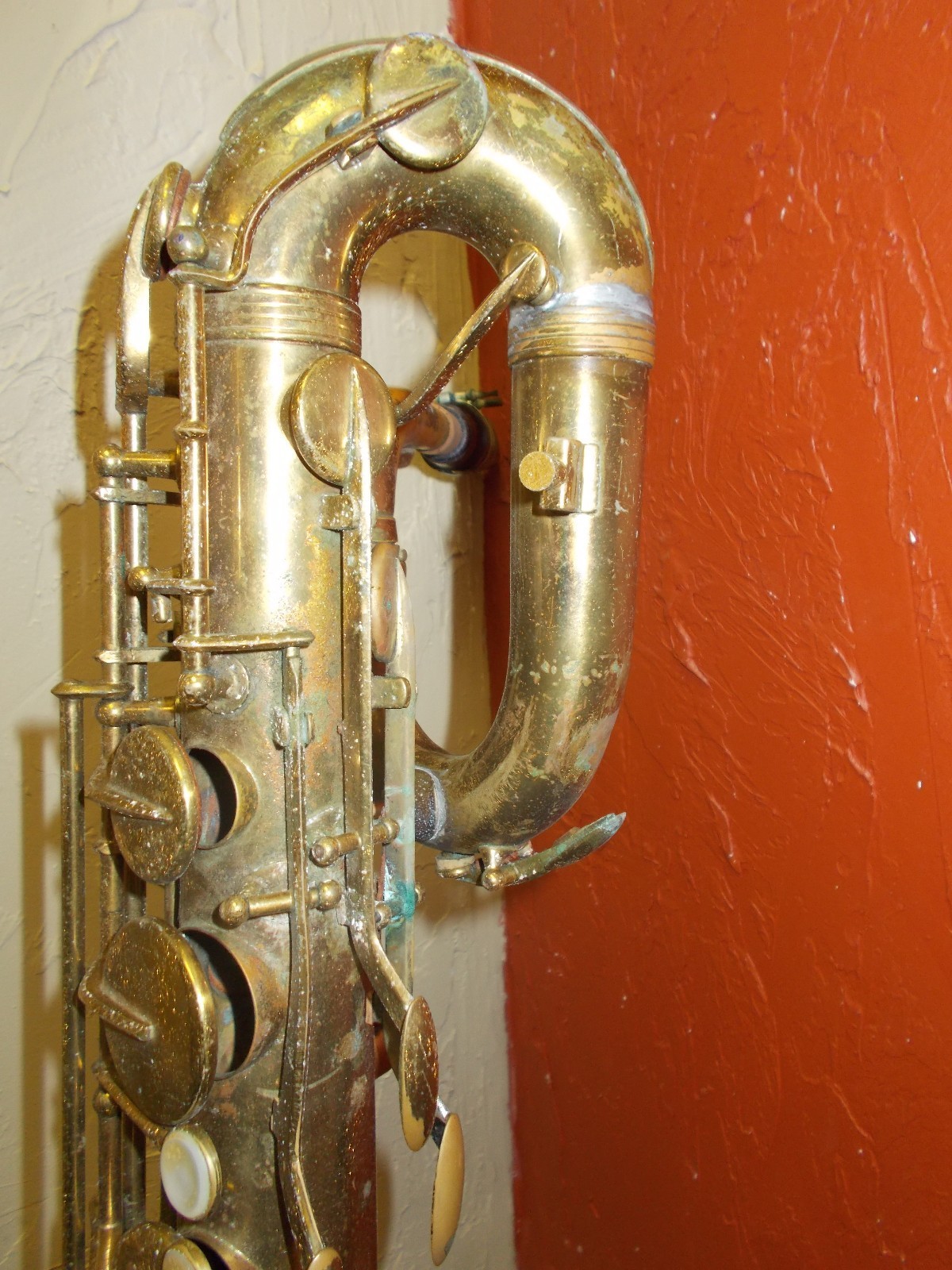
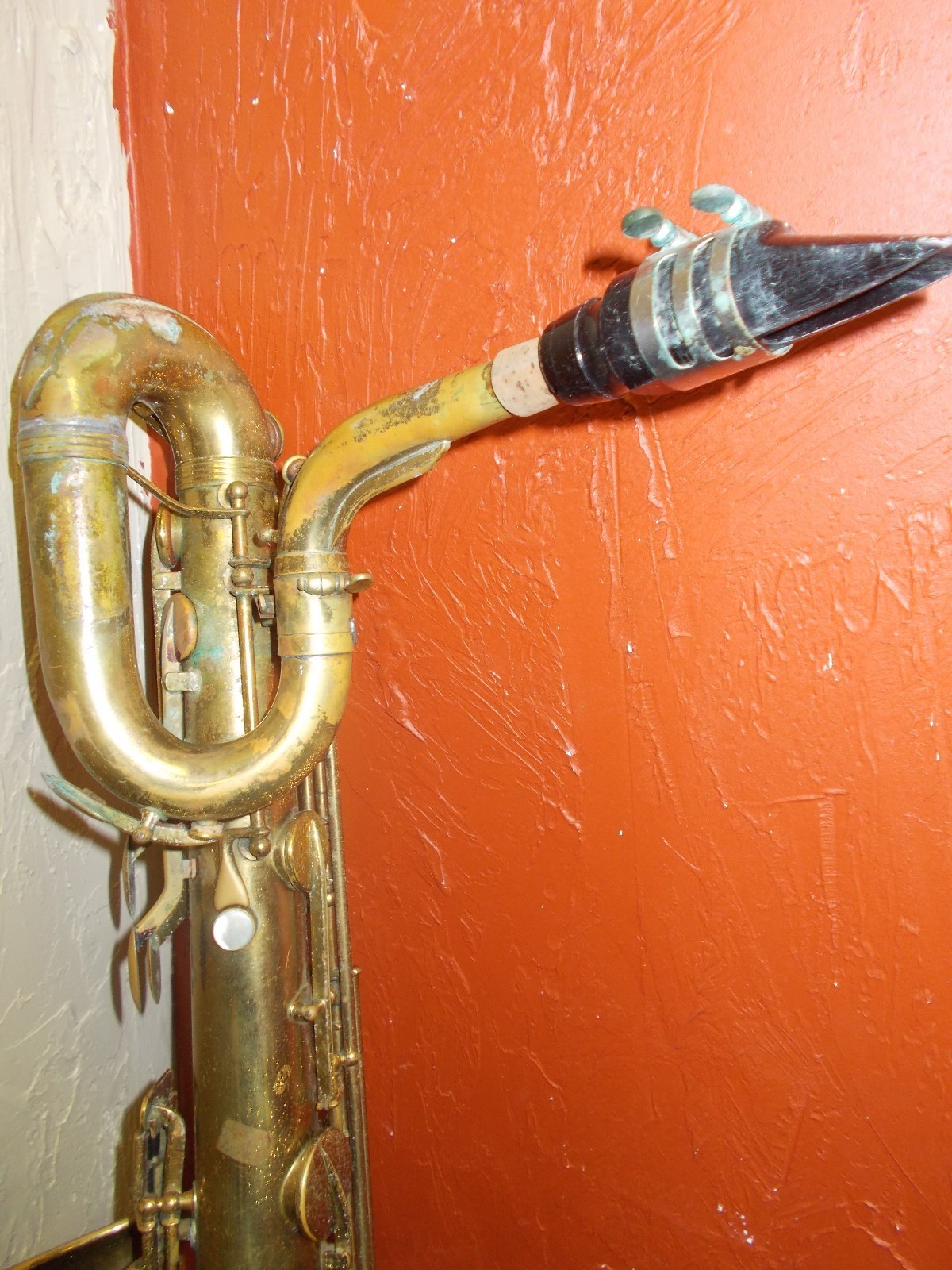
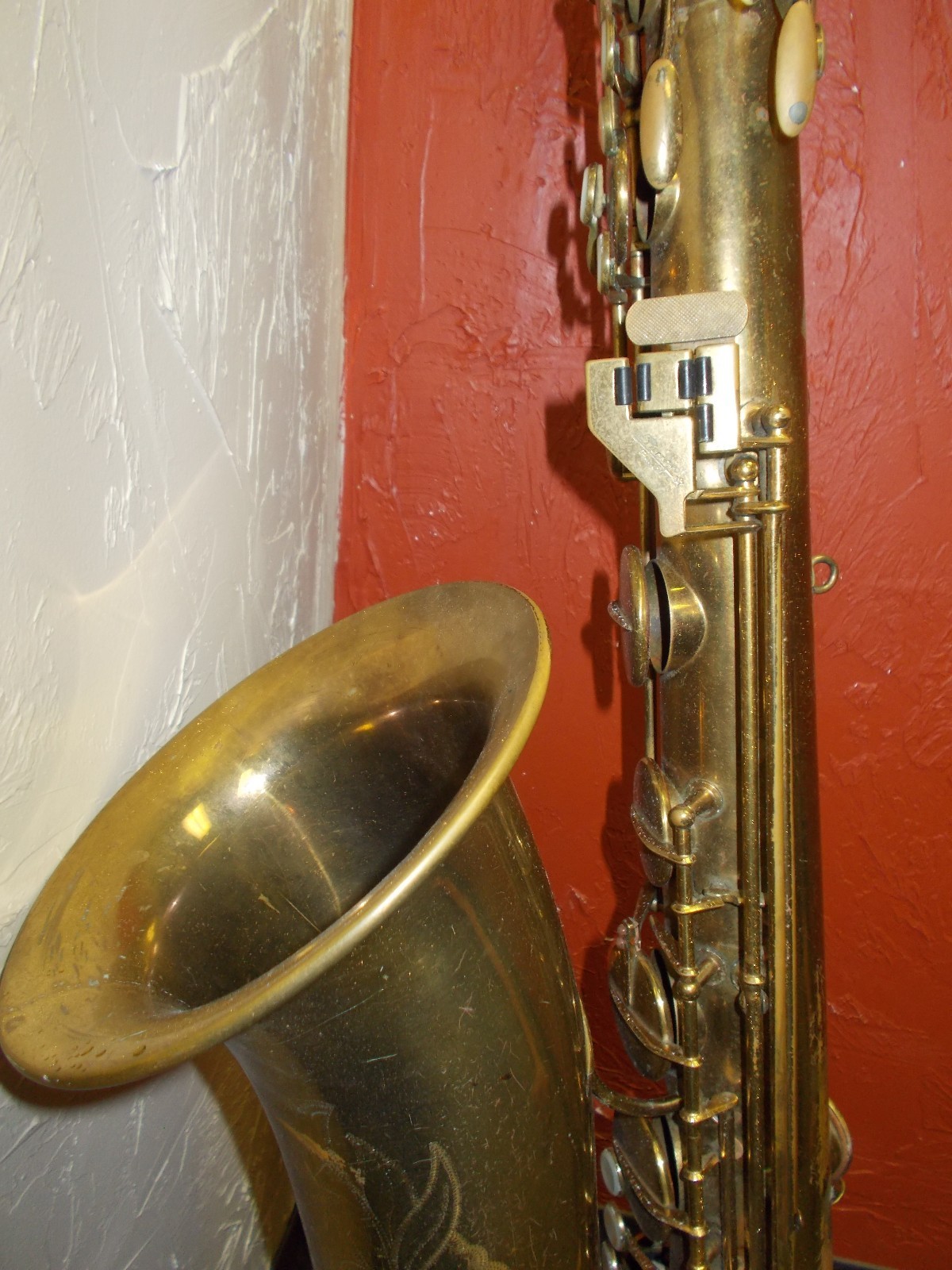
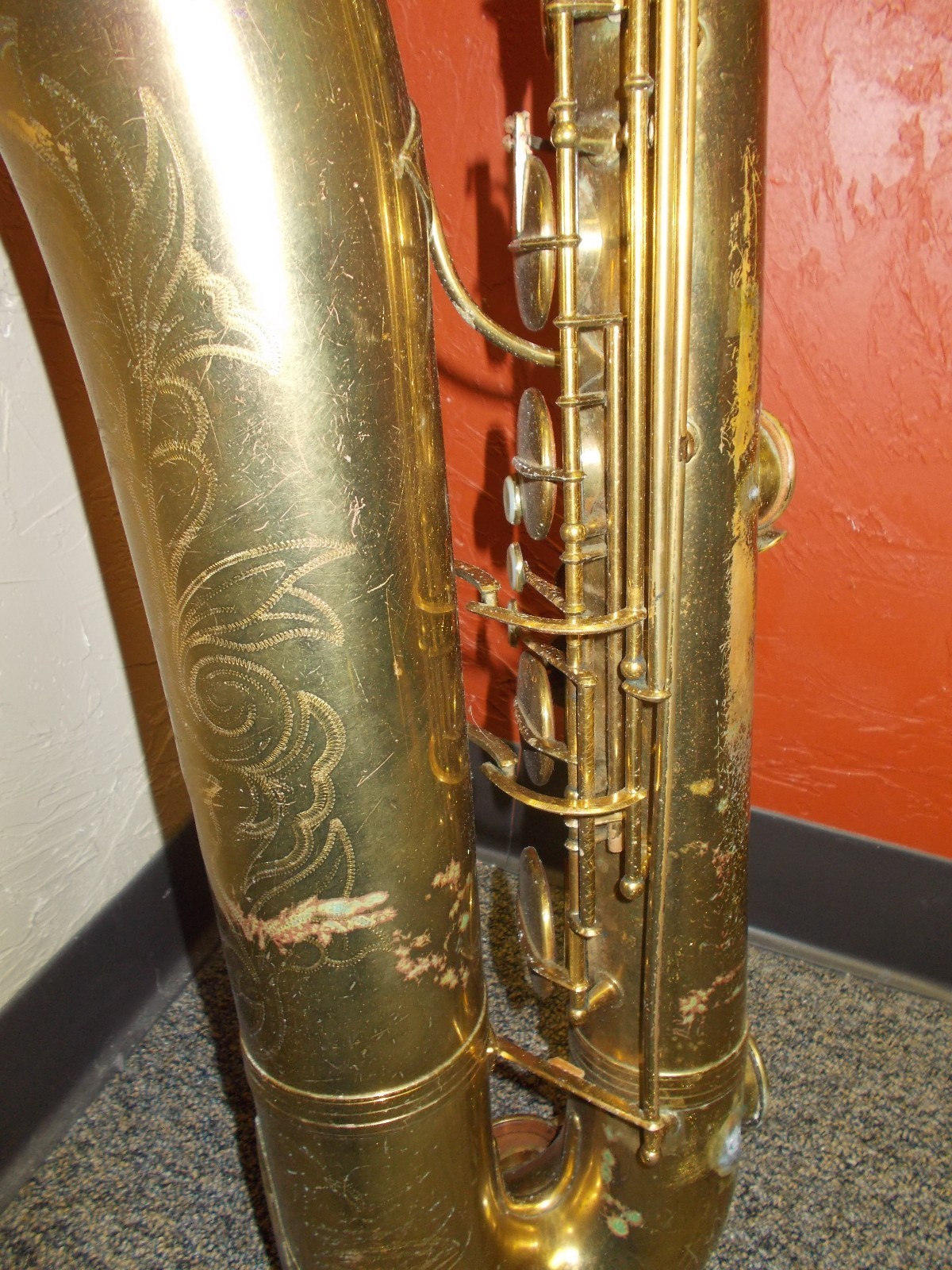
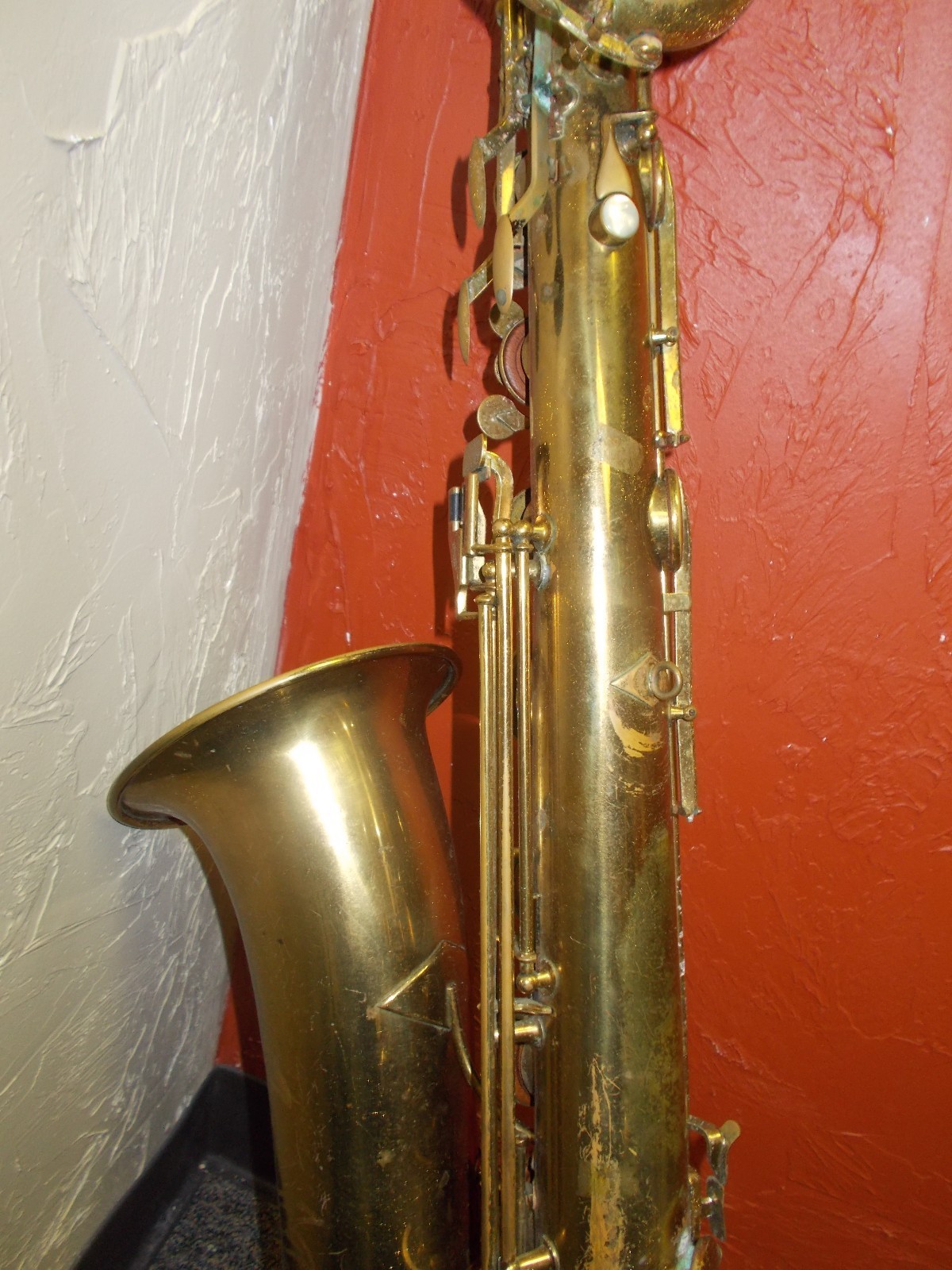


Hi Helen here are pictures of a steelite ebonite alt moutpiece named vibrator made in France.
http://www.ebay.de/itm/Saxofon-Mundstueck-Alto-Vibrator-France-/161827604610?ssPageName=STRK%3AMEBDIX%3AIT&nma=true&si=UP0u7zEVadSHV2qmVp%252FtGnB700o%253D&orig_cvip=true&rt=nc&_trksid=p2047675.l2557
It looks like Riffault to me.
Hi Helen,
I am now working on a alto marked on the bell by L.Pierret * 4178 “Vibrator” 366.
The 366 comes back on the octave key and the 4178 is also engraved on a rib around a post of the bell key axis. This model does have a neck tightening screw and the microtuner is marked “depose”.
The key cups have a depth of around 2.3 mm and they require very thin pads.
On another Pierret marked 3288, padded with resopad like pads,
the rimmed pads are only 2.8 mm thick at the ring.
In the middle they are swollen, but ringed pads are always flat when new so the size is only 2.8 mm.
When repadding Pierrets with the available 4.0 mmm saxophone pads you loose 1.2 mm of the action, which is quite a lot. As Pierret also made clarinets and Clarinet pads are around 2.8 mm thick I guess that he only stocked one size of pads.
The construction of the pads is from the outside similar to Conn resopads (4.0 mm thick) and the old pads of my President tenor (ca 3.6 mm thick).
Now we have three sizes of “resopads” probably made in the USA, France and Germany.
We know that VEB, Keilwerth and a few others also used this type of pads.
Probably the rings inside the pads are factory made with the same type of equipment necessary for pulling the tone holes out of the body of the saxophone.
Now the question is who made these close fitting pads and where they distributed for repadding purposes?
have you seen any ads for this type of pads?
After removing one of the not functional old pads with rings I have some extra information.
The brass rings inside the vibrator pads are 2.35 mm thick. They are close fitting in the key cups and are bent over the rim of the key cup. There is a plastic foil which looks like polyethylene between the leather and the felt. This makes them less resonant than the respopads with metal foil. The function is to keep the thin layer dry.
The felt is loose compared to other brands of pads, making the feel comparable to a thicker layer of more compressed felt.
There is no information on the net on Pierret clarinets so I am going back to the tech who told me he repaired one for more information.
I guess by the tight fit that this type of pad was made in the same atelier as the saxophone.
A clarinet pad with a ring inside can also not be found on the internet.
The tech thinks that the single Pierret clarinet was a stencil, it also did not have rimmed pads.
Polyethylene foil was only introduced in France after the second world war as it was a strategic war secret.
This makes the 3288 Pierret post war, or post war repadded by the factory. Apart from the neck octave key, which is above the neck and not under slung it is comparable to the 4178 “Vibrator” 366. The bell engraving is partly removed. The beginning “co, of “corps embouti” is visible.
OK Theo, let’s see if I can do this again—but this time without losing everything I wrote by hitting my “back” button just before publishing it. 😡
Here are my thoughts to your comments, in no particular order, but rather how they popped into my head.
• I agree that the Pierret clarinet was likely a stencil. From everything that we know about Pierret, they were a saxophone-only manufacturer. For that reason I surmised that the Pierret trumpet that I spotted on eBay last year was also likely a stencil.
• Have you seen Pierret’s pad patent? I can’t read French so I don’t know if this will give you any information about the rings, but it’s worth a look.
• Re: the Vibrator’s neck screws. I’m not 100% sure anymore where I heard that the Vibrator model didn’t have a neck screw. That’s the problem when a person bases their information on photos only: they only get part of the picture. I’ve taken a look at the various Vibrator horns that I have in managed to collect images of in my gallery, and yes, neck screws are clearly visible in some. I also have some photos that I haven’t had a chance to upload yet, and some of those too show a neck screw.
Helen,
Unfortunately the web site is down for maintenance until next Tuesday.
(I’ll bet they’re really all out gawking at the moon 😉 )
Hi Helen and Hi leon,
Yes I have seen the patent before the site was down, the French is very cryptic.
Luckily there is also an English version, which is not much better.
The pre war patent describes a saxophone pad consisting of a ring with a rubber air cushion.
On the side of the tone hole a skin (leather) is glued to the pad.
There is no felt in this construction.
The patent claimes that the pad will still work when the skin is cut open by the tonehole (this is an interpretation).
My guess is that this pad will be too soft to be comfortable.
It will take away a lot of high vibrations and make the sound very dark.
The post war pads I have examined still have the ring (brass).
The polyethylene foil replaces the rubber, but only on one side (tone hole side).
There is no air cushion, below the foil is some fluffy felt.
It is not as compact as the felt in standard saxophone pads.
But as it is a thin layer (around 2 mm) it gives approximately the same feeling to the fingers as 4 mm compacted felt. The felt is protected from moisture until the foil is damaged.
This makes the pad long lasting. moisture is only adsorbed by the leather.
The leather can dry faster as this involves less moisture and will last longer.
The post war pad and the patent shows that Pierret did some research on new materials.
Except for the patent there is astonishing litle information on Pierret pads.
As a consequence you can find a lot of pictures of Pierrets padded with thick 4.2 or 4.0 pads.
The only 2.8 mm saxophone pads in the world can be found at Ferree (without the ring).
When vibrators have neck screws we are a bit in the dark on the vibrator theme.
Is there a connection with the vibrator reeds?
Update: Both of these horns sold very easily. (As I suspected that they would.)
The Vibrator had 27 bids, with the winning bid being €304.59
The Super Artiste baritone saw a bit more action. When the auction was over, 37 bids had come in, and the winner paid $461.00 for this vintage, French bari.